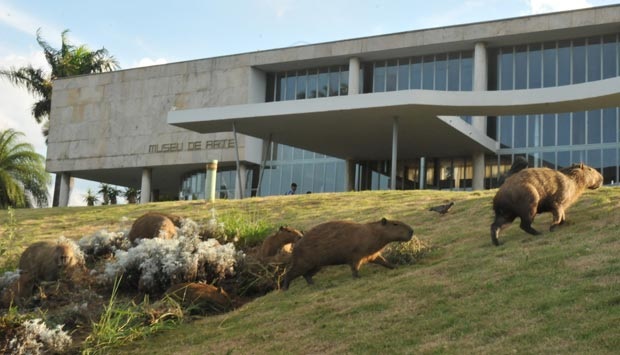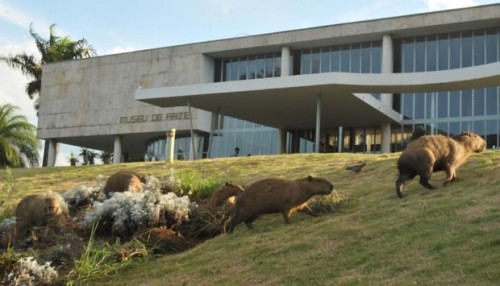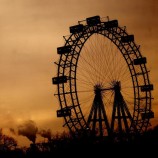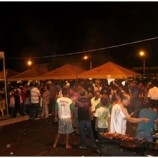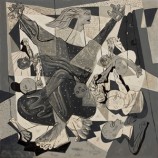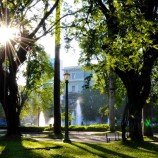The Pampulha Lagoon is the foremost postcard image for visitors of the Mineira Capital. It is an eleven-mile long stretch of lake lined with grassy banks, trees and low lying bushes overlooked by the great architectural heritage of Oscar Niemeyer as well as the ultra-modern São Francisco church, renowned for the canvases of Portinari and the gardens of Burle Max which can be appreciated therein. It is a real breath of fresh air, both culturally and environmentally and where all the pollution can be forgotten for a moment.
In recent years, new inhabitants have emerged in the environment so praised for its beauty and the peacefulness it offers. In recent years, Capybaras migrating in from other wetlands have bred with such intensity that they have practically become domestic pets.
Nature lovers and parents alike now have the opportunity to take their children for an outing and see some of the animals in the countryside. Everybody in the big city feels the urge one time or another to set out for a visit there and see these notoriously tame animals up close.
Only a few months ago, the mayor of Belo Horizonte was gabbing on about how we need to get rid of these “critters.” A lot of buzz, criticism and once again opinions diverge. But the question remains: What agenda is behind it? Is there something behind it?
The preservationists came in to stir up the waters and the subject was left to stew.
In recent weeks, the media as made a big fuss about the death of a 21 year-old male, allegedly of spotted fever, all in the attempt to wave the flag of fear. Why all the hubbub? The alarm traveled beyond the Capital and even across the state borders and has now become a national phobia.
According to the philosopher Luc Ferry, “We live in a society of fear. In addition to the three greatest fears—shyness, phobias and death—there is another that is typically Western: the fear generated by ecologic policies. Fear of the greenhouse effect, the hole in the ozone layer, global warming, microbes, pollution, the end of natural resources. Every year, a new fear is added to all the others: the fear of red meat, bird flu, AIDS, sex, tobacco, the driving speed of the cars. The celebrated environmentalists and documentaries that deal with the issue have as their main objective to introduce more and more fears into people.
In the book The Principle of Responsibility by the German philosopher Hans Jonas, there is a chapter called The Heuristics of Fear. In it, fear is described as a positive and useful passion. In the entire history of Western philosophy, fear is the enemy, something childish, and harmful. Ecology reverses this philosophical tradition as it claims that fear is the beginning of a new wisdom and, thanks to fear, humans will become more aware of the dangers that exist on the planet. Fear is no longer seen as something childish, but as the first step towards wisdom. It is what ecologists call the precautionary principle. This does not mean that ecologists are wrong. Sure, there is an element of truth in what they say, but there is also a great deal of paranoia.
The avenues around the Pampulha Lagoon, popular public spaces for social and sporting events have become a threat to public safety overnight. In the view of a typical farmer John or layman farmer, the solution to the tick infestation is a can of bug spray, “Indicated for the treatment of cattle, horses, sheep, goats, pigs and poultry against external and internal parasites.” Although, in the middle of an urban environment, the issue has attained the status of an impending catastrophe.
The media needs sensationalism in order to reach an audience, filling its space-time with yet another threat. And the alienated people reiterate the news in search of a stratospheric solution. I say it’s about time we used our common sense. The issue is posed and to every issue posed by nature a logical solution can be found.
Beyond reason and good common sense, moderation of debate and an intelligent search for a solution is required. As our elders would say, “If only every problem in Belo Horizonte were as big as this.”
Related Articles


